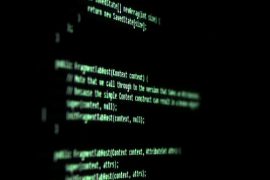As a math major in college, I was required to take a computer programming class. In retrospect, the reasoning made perfect sense: successful programming follows a natural logic, very much the same way math does. But at the time, I was resentful, and a little scared.
Sure enough, I was lost by week two. I enlisted in some tutoring from a dear friend in my section. And she demonstrated to me a completely different way of structuring the code. Her process made much more sense than the methods taught by our instructor, so I adopted it. Three days later, I sat in shock, as the prof announced that some of our assignments looked suspiciously similar.
Let me be clear: I had not copied my friend’s coding. I had identified with her way of thinking and modeled my code after her approach. But it was such out-of-the-box thinking, I understood why the prof thought we were cheating. And sadly, instead of talking to him about it, I simply reverted back to his methods. Yeah, I didn’t get much out of that class.
My friend demonstrated some amazing creativity in her approach to coding. She did this in all of her math classes as well — for which she was greatly rewarded. I learned from her that thinking creatively is critical for succeeding in math of any kind. And I mean any kind — from proving Fermat’s Last Theorem to finding out how many gallons of Symphony in Blue you need to paint your living room.
Too often, math is described in black-and-white terms. There’s a right and a wrong answer. There’s a step-by-step process to follow. If you think of math this way, it’s no wonder. Most of us were taught that math is about a right answer.
But those teachers were wrong. Sure, the right answer is important, but just like those inspirational posters say, it’s all about the journey. How you get to your answer is just as important as the right answer.
And that’s where creativity comes in. Because we all access this information in different ways. Some of us are visual. Some of us need time to think. Some of us like to talk things out. Those of us with true numeracy use creative methods for solving ordinary problems. Take 23 x 6, for example.
Most of the world would stack these numbers up, multiply 6 by 3 and then 6 by 2, add (remembering to align the numbers properly) and get 138. But there are many other ways. I like this one:
23 x 6 = (20 + 3) x 6
= (20 x 6) + (3 x 6)
= 120 + 18
= 138
With that method, I can do the problem in my head!
But you don’t need to solve the problem that way. Come up with your own process. Be bold! Set off on your own! Be creative!
So in answer to the question, Is math creative? YES! You’ve just got to access your own out of the box thinking.
Photo Credit: Yuri Yu. Samoilov via Compfight cc
Do you agree that math is creative? Why or why not? What examples of creativity (or lack thereof) can you share?
